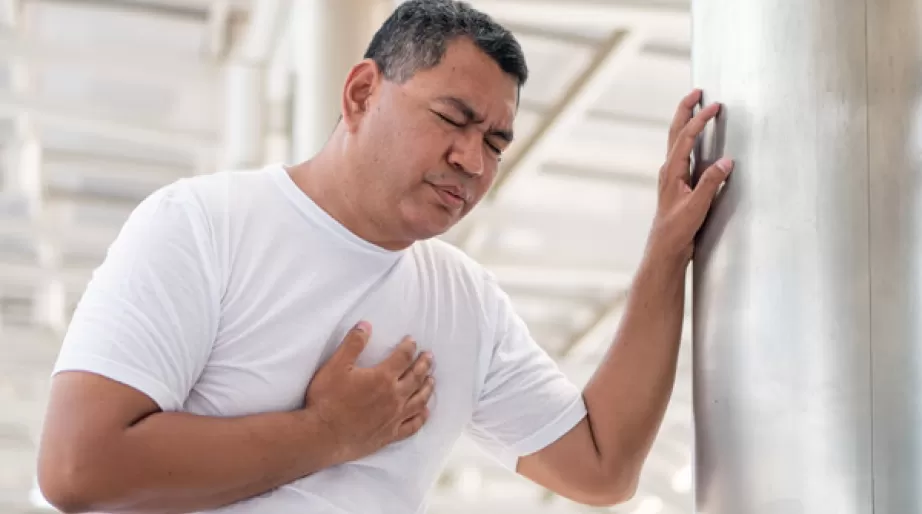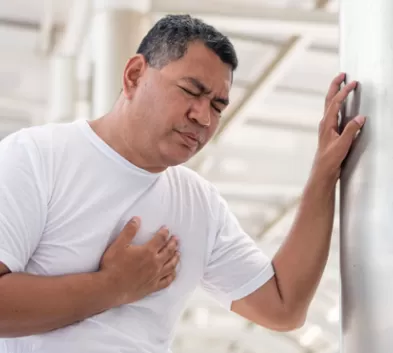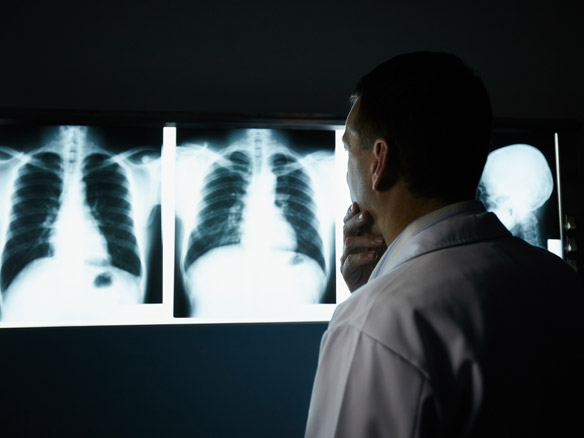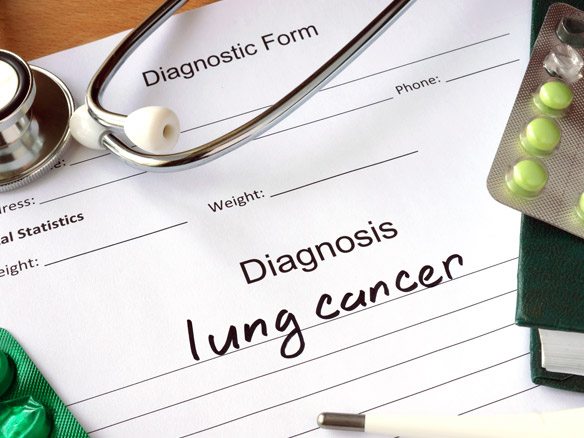Lung Cancer in Singapore


Lung cancer is one of the most common and deadliest forms of cancer, affecting millions worldwide each year. And while many known risk factors can increase a person's chances of developing this disease, the reality is that it can strike anyone.
For years, residents of Singapore have experienced some of the world's highest rates of lung cancer cases. In men, it is responsible for 26% of all cancer deaths; in women, it accounts for 16%, according to the Singapore Cancer Society. So the situation is dire that our government launched a task force to address the problem.
To this day, lung cancer cases have continued to affect many people in Singapore, and everyone needs to be aware of the risks and symptoms of lung cancer.
What is Lung Cancer?

When a person smokes, they open their body up to the risk of developing lung cancer through the tobacco contained in the cigarettes. Lung cancer is a form of cancer that occurs in the lungs when abnormal cancer cells grow uncontrollably and create tumours that eventually spread throughout the parts of the body.
Being the third most common cancer in Singapore, lung cancer affects millions of people every year. According to National Cancer Centre Singapore, 13.7% of new cancer cases in men and 7.7% in women in Singapore were due to lung cancer.
Lung cancer affects the body by spreading lung cancer cells and hindering respiratory function. As the tumours grow and spread in one or both lungs, they interrupt the normal flow of oxygen in and out of the lungs, leading to shortness of breath, coughing, and chest pain. If a person develops advanced lung cancer, it can also cause blood clots or pneumonia when these lung tumours block the airways or interfere with the lungs.
Smoking isn't the only known cause of lung cancer; several other factors, such as exposure to certain chemicals or radiation, can put you at risk of developing this disease. If you feel or suspect that you may have lung cancer, it's important to get diagnosed and treated early on so your condition doesn't worsen over time.
There are different forms of lung cancer, and we'll discuss them in more detail below. First, however, seeking medical attention is essential. You may be asked to undergo several diagnostic procedures, including blood tests, a chest x-ray, and a biopsy.
Types of Lung Cancers
There are two main types of lung cancer. One form may be more aggressive and typically require invasive treatments, such as surgery and chemotherapy.
Non-small cell lung cancer (NSCLC)
The most common and experienced form of lung cancer is non-small cell lung cancer (NSCLC). This condition affects more than 80% of all people diagnosed with the disease. It is most likely to develop in smokers and former smokers, but it can also affect those who have never smoked tobacco.
Small cell lung cancer (SCLC)
The second primary type of lung cancer is small cell lung cancer (SCLC), which usually occurs much later than NSCLC. Small-cell lung cancer can be aggressive and spread quickly to other organs or, generally, throughout the body, making it difficult to treat. As a result, individuals with small cell lung cancer often require immediate treatment, including surgery, chemotherapy, and radiation therapy.
Be it NSCLC or SCLC, both types of lung cancer should be addressed immediately.
Risk Factors

Several activities and behaviours can increase your risk of developing lung cancer. These include smoking tobacco, long-term exposure to certain chemicals (such as asbestos), or being diagnosed with a previous respiratory system disease like chronic obstructive pulmonary disease (COPD) or asthma.
-
Cigarette Smoking
Cigarette smoking is known to be the most common cause of lung cancer. Tobacco use is responsible for about 90% of all disease cases. Cigarettes contain over 4,000 chemicals, including tar and nicotine, which damage the lungs and increase your risk of developing cancer compared to a non-smoker.
-
Second-hand Smoking
In addition to smoking cigarettes, being exposed to second-hand smoke can also put you at risk of contracting lung cancer. Second-hand smoke comes from burning tobacco products like cigarettes, cigars, or pipes. It can also come from someone else's mouth while they are smoking. Second-hand smoke is unsafe as it can increase a non-smoker's risk of lung cancer by 20-30%.
-
Industrial Hazards
Exposure to and inhaling certain chemicals like asbestos, coal gas, chromates, and other toxic gases can increase your risk of lung cancer. These chemicals are often found in certain industrial settings, such as power plants, mines, or factories. If you work in one of these environments, it's essential to protect yourself from exposure, such as wearing a face mask or respirator.
-
Air Pollution
Living in areas with severe air pollution can also put you at risk of developing lung cancer. Sources of this risk factor can include cars, factories, power plants, and other areas with a high level of harmful chemicals and gases. Using an indoor air filter or an outdoor purifier can help to reduce your exposure to these pollutants.
-
Family History
When your immediate family members, such as your parents or siblings, have lung cancer, it can increase your disease's risk. This is due to inheriting specific genes that make you more susceptible to the disease. Unfortunately, genetics can pass lung cancer to future generations, so it's crucial to know your family's health history.
If you know you are at higher risk for this illness, you must monitor your health carefully and take steps to reduce your chances of developing this condition.
Symptoms of Lung Cancer
Early-stage lung cancer often does not have any typical symptoms. This is one of the reasons why the disease is so difficult to detect in its early stages. However, as cancer progresses, it can cause a variety of symptoms, including:
-
A persistent cough that does not go away
-
Shortness of breath
-
Chest pain or discomfort
-
Wheezing
-
Hoarseness
-
A change in the colour of your mucus (sputum)
-
Blood in your sputum
-
Unexplained weight loss
If you experience any of these lung cancer symptoms, it's important to see your doctor right away so they can determine the cause.
Diagnosis

If you notice that you are experiencing any lung cancer symptoms, it's important to see your doctor as soon as possible. Doctors will likely perform a physical exam and order one or more tests to diagnose your condition. These tests will help determine if the growth of abnormal lung cells is malignant. The tests patients may be asked to undergo to diagnose the illness include:
Imaging Tests
Imaging tests are the initial phase of cancer diagnosis and are necessary to determine the presence of growth in the lungs through imaging. A CT scan is the most common imaging test to diagnose lung cancer. However, a PET scan may also be ordered if the CT scan does not provide enough information.
Needle Biopsy
Needle biopsy is a minimally invasive procedure used to diagnose lung cancer. During a needle biopsy, your doctor will insert a small, hollow needle into the tumour to extract a tissue sample for testing. This procedure is done under local anaesthesia and typically takes less than an hour to complete.
Sputum Cytology
A sputum cytology test is a simple procedure that involves testing the sputum (or mucus) that is coughed up from your lungs. This type of testing looks for cancer cells in the sample to determine if they are malignant or not.
Bronchoscopy
Another minimally invasive procedure used to diagnose lung cancer is bronchoscopy. Bronchoscopy is a procedure that uses a small, flexible tube inserted through the nose or mouth and down the throat into the airways. This tube has a small camera that will help the doctor look at the lungs to see if there are any abnormalities. This is typically done under general anaesthesia and can help your doctor determine the size, location, and type of tumour present.
A biopsy is typically ordered to confirm a lung cancer diagnosis when suspicious-looking growths are found in the lungs.
Prevention

At an early stage, it may be possible to reverse the course of lung cancer by taking steps to prevent further damage and heal your body. Some lifestyle habit changes you can make to help reduce your risk of contracting lung cancer include:
Stop Smoking
Smoking, specifically cigarettes, is one of the most significant risk factors for contracting lung cancer. Quitting smoking can help reduce your chances of getting this condition and improve your overall quality of life. If you're a smoker, it's important to quit as soon as possible. As for the non-smokers, better not to start smoking. It may be tempting to try, but it is important to know other risk factors and not fall victim to this dangerous habit.
Avoid carcinogens
Carcinogens are substances or factors that contribute to the development of cancer. Some common carcinogens that may increase your risk for lung cancer include asbestos, radon gas, and other harmful chemical substances. Therefore, avoiding these substances whenever possible is important to reduce your risk of developing this condition.
Have a Healthy Lifestyle
A healthy lifestyle is important for overall health. It can help reduce your risk of developing lung cancer—some lifestyle changes you can make include eating a healthy diet and exercising regularly. Eating a healthy diet is vital for overall health and can help reduce your risk of developing lung cancer. Aim to eat a lot of fruits, vegetables, and whole grains. In addition, limit your intake of processed foods, red meat, and alcohol.
Exercise regularly is another great way to reduce your risk of developing lung cancer. In addition, it helps to improve your overall health and helps to keep your weight down, which is important in reducing the risk of this condition.
Making these changes can help improve your overall health and quality of life.
Treatments for Lung Cancer in Singapore

While lung cancer can be a severe condition, treatment options available can help improve your prognosis. Treating this illness often depends on the lung cancer stage and your overall health.
Some standard cancer treatment options for lung cancer include:
Surgery
Surgery is often used to remove the tumour from the lungs. This procedure is plausible if the cancer is stage 1 or 2 and hasn't spread to other body parts. Surgical procedures can be done through several different procedures, such as wedge resection, lobectomy, or pneumonectomy (removal of an entire lung). The type of surgery the patient may need to undergo will depend on the size and location of the tumour.
Radiation
Radiation therapy is another standard cancer treatment option for lung cancer. This therapy uses targeted radiation to kill cancer cells while sparing normal tissues and organs. Radiation therapy destroys or shrinks lung cancer tumours and slows their uncontrolled growth.
Chemotherapy
Chemotherapy is a common drug treatment that uses powerful medications or strong chemicals to kill cancer cells and shrink tumours. These medications can be taken in pill form or through an intravenous injection.
Chemotherapy is often combined with other treatment strategies, such as surgery or radiation therapy, to help improve outcomes and reduce the risk of worsening the illness.
Targeted Therapy
The last type of therapy is targeted therapy. Targeted therapies are newer forms of treatment that use drugs or other substances to target specific molecules involved in cancer cells' uncontrolled growth and progression. These drugs work by interfering with the ability of cancer cells to grow and spread.
Several treatment options are available for those diagnosed with lung cancer, so it's important to work alongside your doctor to determine which treatment is right for you. With early detection and proper care, most people with lung cancer can achieve successful outcomes and enjoy a good quality of life.
Conclusion
Overall, it's important to be aware of your risk factors for developing lung cancer and take steps to reduce those risks as much as possible. With early diagnosis and proper care, many lung cancer patients can lead long and healthy lives. In addition, by making healthy lifestyle changes and getting regular screenings, you can help improve your chances of fighting this condition.
MSIG is committed to helping our customers protect themselves and their loved ones from the dangers of lung cancer. We offer a wide range of insurance plans like our MSIG CancerCare Plus that provide coverage for treatment and care and financial assistance in case of a diagnosis. For more information about our products and services, don't hesitate to contact us today. You can also get a quote here.


